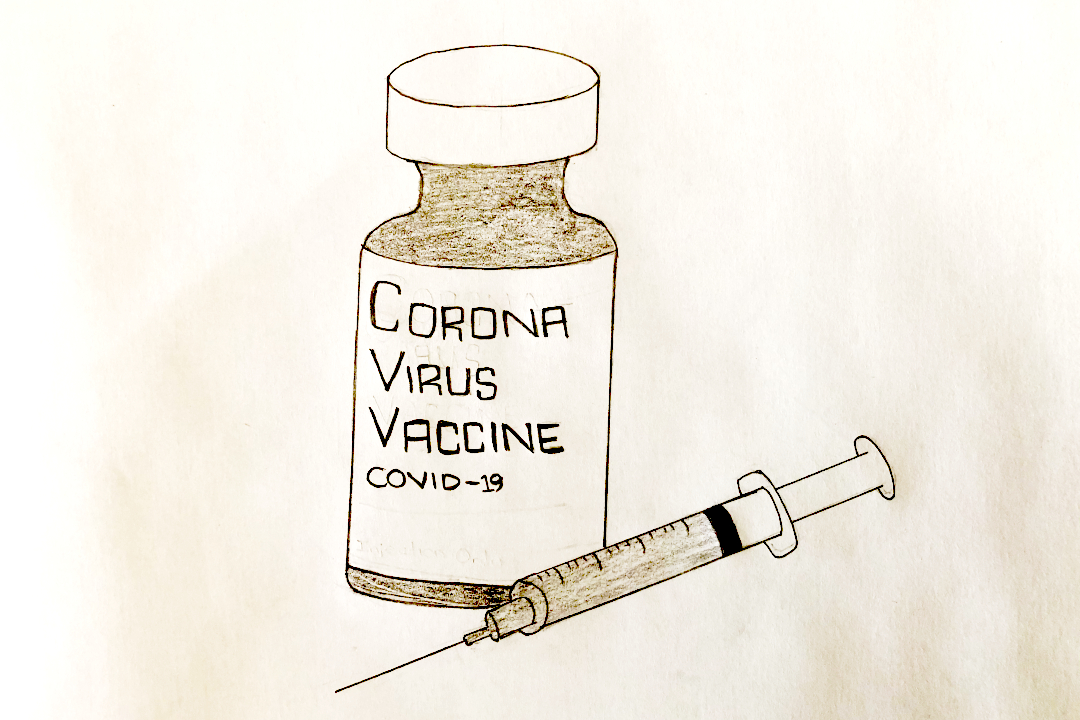With the rollout of COVID-19 vaccines underway in Canada, it’s easy to think that we’re nearing the end of the tunnel. However, there is still a long way to go before we can go back to normal, if ever. The Varsity has compiled a quick guide of what we know and don’t know about COVID-19 vaccines.
Do the vaccines prevent you from spreading COVID-19?
The Pfizer and Moderna vaccines used in Canada are known to be at least 90 per cent effective at preventing you from catching the virus, but it is still unclear whether a vaccinated person can transmit COVID-19.
There are two main reasons for this: a lack of data and the way that vaccines work. First, there is simply not enough public health data yet to make any definitive statements about whether the vaccines that are available curb transmission or not. From an immunological perspective, we know that vaccines trigger an immune response similar to the one that happens when you get sick.
Current evidence suggests that vaccines trick the body into producing IgG antibodies, which attack foreign organisms, including viruses. However, another type of antibodies, IgA, might be more important for stopping transmission, and we don’t know how effective vaccines are at producing IgA antibodies.
Yet there is a reason for cautious optimism. Dr. Paul Sax of Harvard Medical School contends that although some vaccines allow asymptomatic colonization, there are reasons to believe that the vaccine will have an effect on transmission, calling the odds “excellent.”
What do the new mutations mean for public health?
Lately, public health officials have been concerned about the spread of new, more infectious strains of COVID-19, particularly the newly-identified B.1.1.7 strain, which originated from the UK. B.1.1.7 has been identified in people with no travel history, a fact that suggests that variants are already circulating in the community.
A higher daily infection rate means that health care systems will become even more overwhelmed with COVID-19 patients, which will impact the quality of care that people with COVID-19 and other conditions receive. Existing tests may be less likely to pick up on the new strains, but from what we know so far, vaccines should work just as well against the new variants.
In a statement issued on January 20, Chief Public Health Officer Dr. Theresa Tam once again urged Canadians to abide by existing public health guidelines, such as self-isolating if you have any COVID-19-like symptoms, staying home as much as possible, avoiding social gatherings and essential travel, wearing a mask, and practising good hand hygiene, which is more important than ever in response to the new strains.
When will we go back to normal?
When we will return to in-person classes and social gatherings largely depends on the timeline of the rollout of the vaccines to the general population, which varies by province and region. In Ontario, people who are not at high risk of getting COVID-19 or becoming seriously sick are expected to get the vaccine starting around August or September.
However, returning to normal doesn’t necessarily have to be after everyone is vaccinated, as not everyone has to be vaccinated to achieve herd immunity. Some scientific modelling suggests that if a vaccine is 80 per cent effective and three quarters of the population gets it, an epidemic can end without additional public health measures. However, we will have to follow the measures that we are all too familiar with for the foreseeable future.


